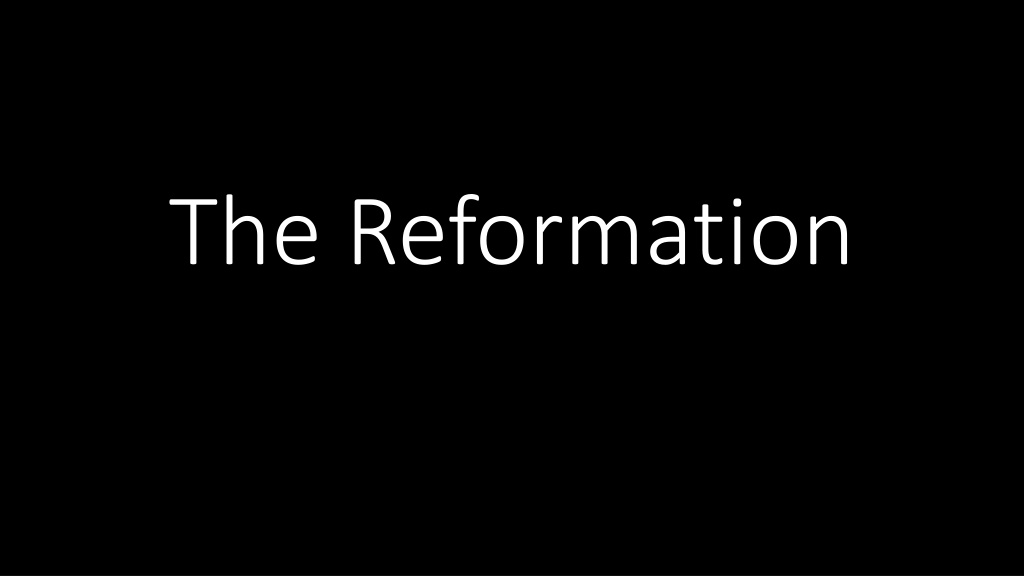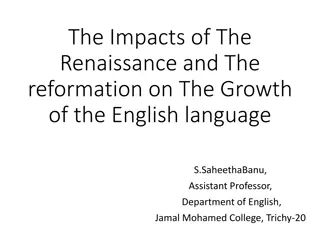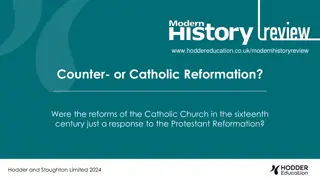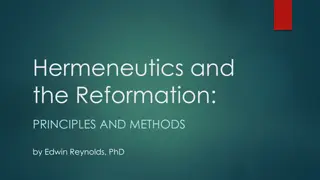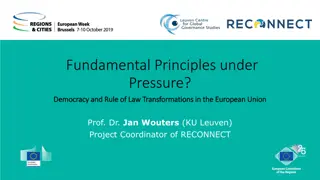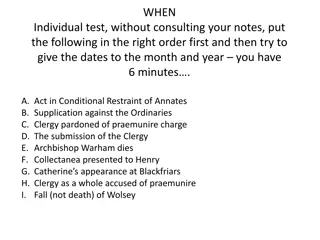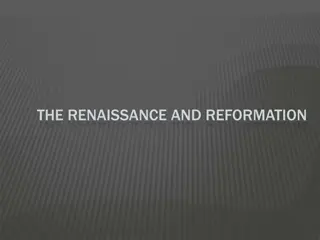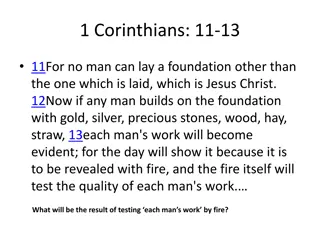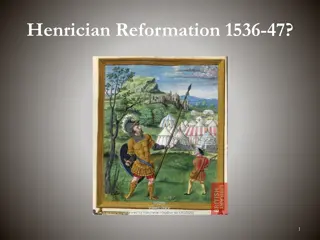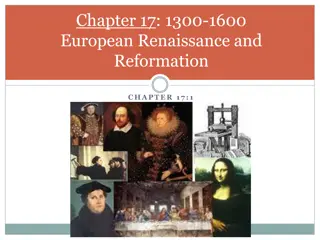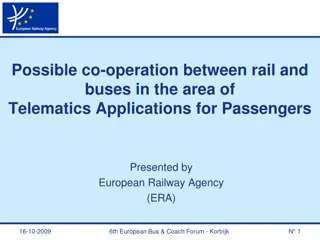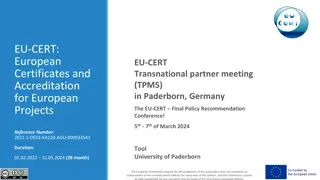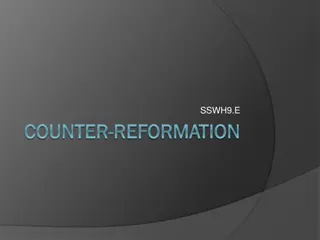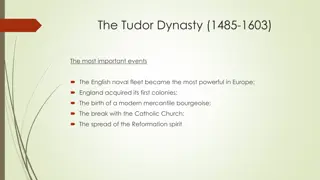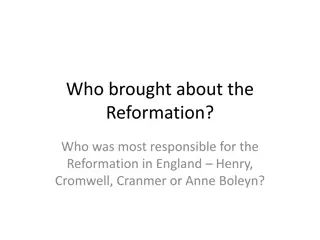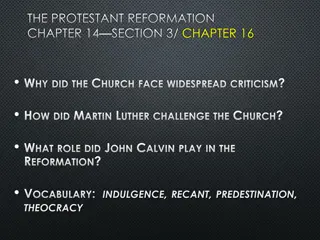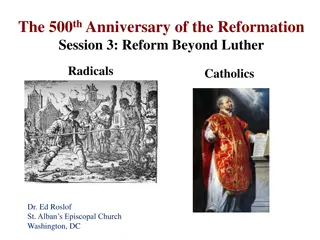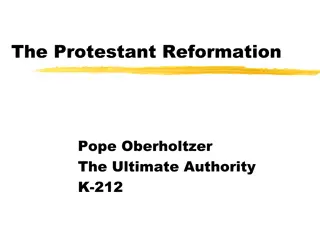The Impact of the Reformation on European History
The Reformation brought significant changes to theology, religious institutions, and culture in Europe. Reformers like Martin Luther and John Calvin criticized Catholic abuses, leading to new interpretations of Christian doctrine. The Catholic Counter-Reformation and conflicts among religious groups overlapped with politics and economic competition, shaping European history.
Download Presentation

Please find below an Image/Link to download the presentation.
The content on the website is provided AS IS for your information and personal use only. It may not be sold, licensed, or shared on other websites without obtaining consent from the author. Download presentation by click this link. If you encounter any issues during the download, it is possible that the publisher has removed the file from their server.
E N D
Presentation Transcript
The Reformation fundamentally changed theology, religious institutions, and culture Christian humanism employed Renaissance learning in the service of religious reform. Erasmus Thomas More Juan Luis Vives Reformers Martin Luther and John Calvin, as well as religious radicals such as the Anabaptist, criticized Catholic abuses and established new interpretations of Christian doctrine and practice. Indulgences Nepotism Simony Pluralism and absenteeism The Catholic Counter-Reformation, exemplified by the Jesuits Order and the Council of Trent, revived the church, but cemented the division within Christianity, St. Teresa of Avila Ursulines Roman Inquisition Index of Prohibited books
Religious reform both increased state control of religious institutions and provided justifications for challenging state authority. Monarchs and princes, such as the English rulers Henry VIII and Elizabeth I, initiated religious reform from the top down in an effort to exercise greater control over religious life. Spanish Inquisition Concordat of Bologna (1516) Book of Common Prayer Peace of Augsburg (1555) Some Protestants, including Calvin and the Anabaptists, refused to recognize the subordination of the church to the state. Religious conflicts became a basis for challenging the monarchs control of relgious institutions Huguenots Puritans Nobles in Poland
Conflicts among religious groups overlapped with politics and economic competition within and among states. Issues of religious reform exacerbated conflicts between monarchy and the nobility, as in the French Wars of Religion Catherine de Medici St. Bartholomew's Day Massacre War of the Three Henrys Henry IV The efforts of the Habsburg rulers failed to restore Catholic unity across Europe Charles V Philip II Philip III Philip IV States exploited religious conflicts to promote political and economic interests. Catholic Spain and Protestant England France, Sweden, and Denmark in the 30 Years War A few states, such as France with the Edict of Nantes, allowed religious pluralism in order to maintain domestic peace. Poland The Netherlands
